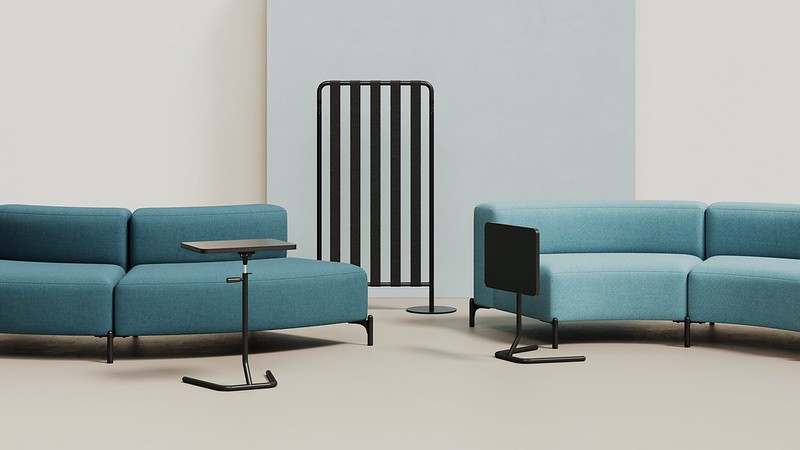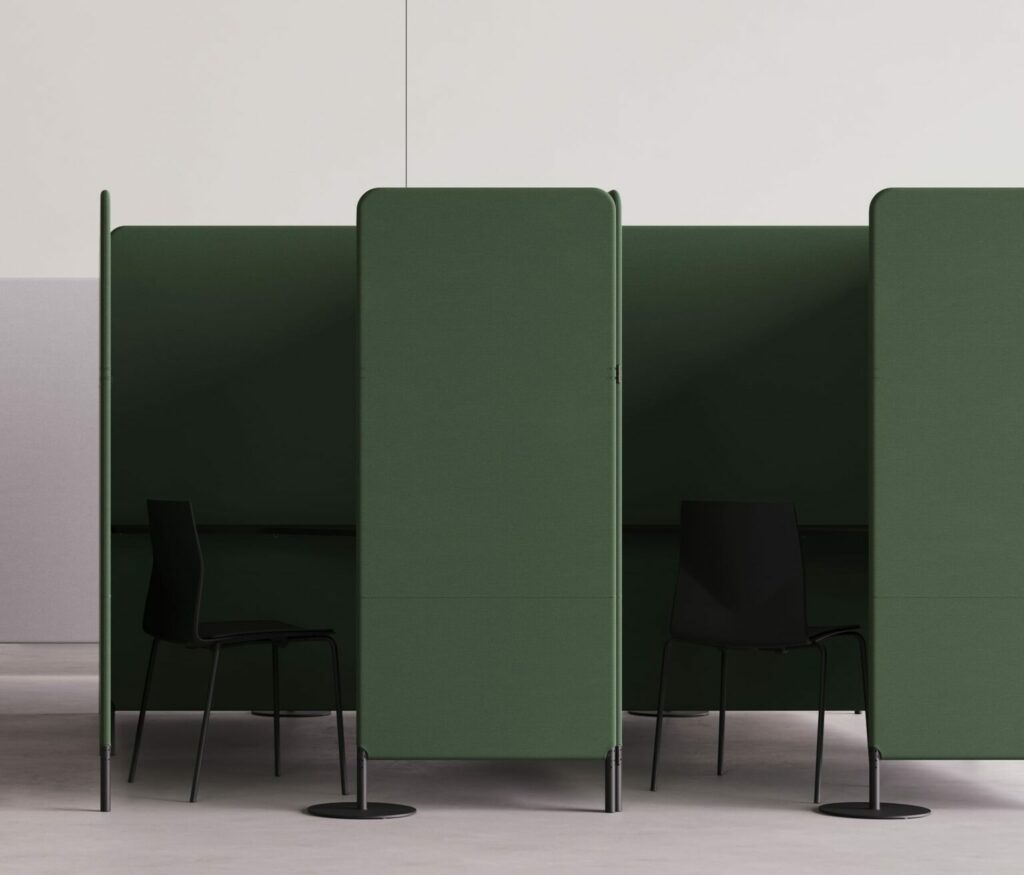The modern workplace is evolving, and so are the principles of inclusive office design. Organisations strive to create inclusive environments and office furniture design plays a crucial role in achieving this goal. Inclusive office furniture design goes beyond aesthetics and comfort; it focuses on making workplaces accessible and functional for everyone. In this post, we’ll explore how inclusive design principles can be applied to office furniture, making workplaces more accessible and welcoming for all employees and how organisations and their employees can benefit.
What is Inclusive Design?
Inclusive design is all about creating products and environments that can be used by as many people as possible, regardless of their age, ability, or other factors. In the context of office furniture, this means going beyond the traditional, one-size-fits-all approach and considering the diverse needs of the workforce. By promoting accessibility and diversity, inclusive office furniture design can boost productivity and well-being among employees.
Key Principles of Inclusive Office Furniture Design
Ergonomics and Adjustability
One of the fundamental principles of inclusive design is ergonomics. Ergonomically designed furniture considers the varying needs of employees, ensuring that chairs, desks, and other furnishings can be easily adjusted to accommodate different body sizes and shapes. Height-adjustable desks, adjustable chairs with lumbar support and armrests, and monitor stands are just a few features that can enhance comfort and reduce physical strain for a broad range of users.
Discover our range of task chairs to find the perfect adjustable chairs to suit your employees needs and match your office aesthetics.

Accessibility and Mobility
Mobility and accessibility are key considerations for inclusive office furniture. Desks, tables, and workstations should be designed with adequate clearance to accommodate wheelchair users. Additionally, it’s essential to provide furniture that supports different working postures, including standing desks and sit-stand options, catering to employees with mobility issues or those who prefer alternative working positions. Another consideration could be incorporating features such as wide desk spaces that can accommodate assistive devices like screen readers or Braille displays.
Flexibility
Flexibility in office furniture design allows for easy customisation to meet the unique needs of employees. Modular furniture and adaptable workstations make it possible for individuals to create their ideal workspace, whether it’s a standing desk, a quiet space for focused work, or collaborative areas for team discussions.
Combining FourPeople sofas with the Y-table offers a great example of how to craft a flexible and inclusive workspace. The Y-table, being lightweight, height-adjustable, and effortlessly manoeuvrable, empowers employees to fashion a workspace that perfectly suits their requirements. Moreover, the FourPeople sofa’s modular design allows for swift reconfiguration, adapting to your team’s evolving needs.

Tactile and Sensory Features
Inclusive design should consider tactile and sensory elements. Furniture should be easy to navigate for individuals with visual impairments, using features like contrasting colours and textured surfaces. Braille labels or tactile markers can be added to furniture elements for added accessibility.
Wayfinding and Signage
Proper wayfinding and signage are also essential in creating an inclusive workspace. Clear and consistent signage with high-contrast text and Braille ensures that individuals with various abilities can easily navigate the office environment, including finding specific workstations, meeting rooms, and facilities.
Personal Space and Privacy
Creating an inclusive workspace also means respecting individual preferences and needs for personal space and privacy. This can be achieved through the design of cubicles, booths, partitions, and adaptable workstations that offer flexibility in terms of open and closed office environments.
The FourPeople work booths are designed to provide employees with a dedicated and distraction-free environment where they can concentrate on individual tasks, boosting their productivity and overall well-being. Whether it’s tackling important projects, making confidential calls, or simply finding a peaceful space for deep work, these booths are a valuable addition to any office setting.

Personalisation
Employees should have the option to personalise their workspace to suit their comfort and productivity needs. Providing options for employees to add their unique touch to their workspace, such as adjustable lighting and storage solutions, can enhance comfort, productivity and employee satisfaction.
Benefits of Inclusive Furniture Design
Incorporating inclusive design principles into office furniture offers a wide range of benefits for both organisations and their employees. These benefits go beyond mere accessibility, extending to various aspects of productivity, well-being, and overall workplace satisfaction. Here are some of the key advantages of embracing inclusive office furniture design:
Enhanced Productivity
Inclusive office furniture design helps create a more comfortable and accommodating workspace for all employees. Ergonomically designed furniture reduces physical strain and discomfort, allowing individuals to work more efficiently and with fewer distractions. When employees are comfortable and supported, they can focus better on their tasks, leading to increased productivity.
Improved Well-Being
A workplace that caters to the diverse needs of its employees fosters a sense of belonging and well-being. Inclusive office furniture design takes into account physical, sensory, and mobility considerations, reducing stress and enhancing the overall working experience. This, in turn, contributes to improved mental and physical health among employees.
Attracting and Retaining Talent
Organisations that prioritise inclusivity and accessibility in their office furniture design are more likely to attract and retain top talent. Job seekers are increasingly considering workplace inclusivity as a factor when choosing their employer. Furthermore, employees are more likely to stay with an organisation that values their needs and well-being.
Accessibility Compliance
Meeting accessibility standards and guidelines is not just a legal requirement; it’s also a reflection of an organisation’s commitment to social responsibility. Inclusive office furniture design ensures that the workplace is compliant with accessibility regulations, reducing the risk of legal issues and fostering a positive public image.
Greater Collaboration
Inclusive design doesn’t just cater to individual needs but can also facilitate teamwork. Flexible and adaptable furniture arrangements, as well as collaborative workspaces, encourage interaction and communication among employees. This can lead to more innovative ideas and a stronger sense of unity within the organisation.
Positive Work Culture
Inclusive furniture design contributes to a positive work culture where diversity is celebrated, and every employee feels respected. Such a culture can improve morale, teamwork, and overall job satisfaction for employees.
Embracing Inclusive Furniture Design
Inclusive design is a critical component of creating a more accessible, diverse, and welcoming workplace. By applying inclusive design principles, organisations can foster a workspace where every employee can thrive. In doing so, they not only promote inclusivity and diversity but also enhance productivity and well-being in the workplace. It’s a win-win for both employers and employees.


